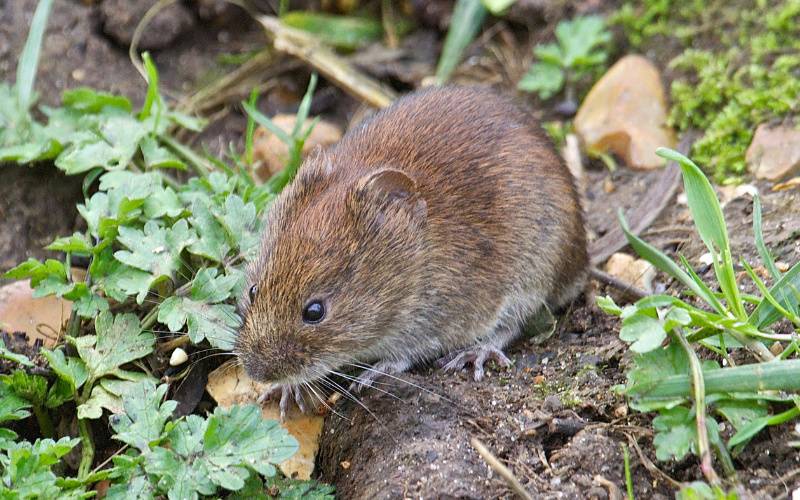Proven Vole Control Approaches to Secure Your Property
Proven Vole Control Approaches to Secure Your Property
Blog Article
Comprehensive Guide to Effective Vole Parasite Control: Problem Recognition and Treatment Approaches
In the realm of efficient bug control, vole invasions pose an one-of-a-kind obstacle that requires a critical strategy. These little rodents, commonly incorrect for mice, can ruin yards, grass, and crops if left unattended. Determining the signs of vole existence and applying targeted treatment methods are crucial parts of an effective pest management strategy. By exploring the nuances of vole actions, comprehending crucial signs of infestation, and evaluating a series of control choices, one can establish a detailed strategy to deal with these evasive parasites.
Understanding Vole Habits
Vole habits is defined by their burrowing practices and quick reproduction prices, making them a challenging parasite to manage effectively. These little rats generally create intricate passage systems underground, utilizing them for sanctuary, food storage, and transportation. Voles are herbivores, eating a selection of plants, light bulbs, roots, and lawns, which can create significant damages to yards, orchards, and lawns. Their rapid reproductive rate more complicates control initiatives, with women with the ability of creating numerous clutters in a single year, each consisting of numerous offspring.
Voles are most energetic throughout the very early morning and evening hours, investing most of their time foraging for food. Their burrowing behaviors not just disrupt gardens and grass however likewise make them challenging to remove and spot. Understanding vole habits is essential for reliable pest control techniques. By determining their burrow places, keeping track of feeding areas, and carrying out targeted control methods, such as capturing or environment adjustment, vole invasions can be taken care of effectively.
Signs of Vole Invasion

Avoidance Strategies
Carrying out efficient prevention approaches is important in reducing vole invasions and securing vegetation from their destructive feeding habits. To protect against vole next invasions, it is crucial to begin by eliminating potential food resources and sanctuary.
Routinely checking the residential or commercial property for indicators of vole task, such as paths and tunnel openings, is try this web-site crucial for early discovery and punctual activity. If vole task is believed, think about utilizing traps or repellents tactically placed near their pathways.
Non-Lethal Control Methods
To properly take care of vole populations while prioritizing humane methods, non-lethal control approaches use useful remedies for lowering vole damage in gardens and landscapes. One effective method is using physical barriers such as equipment fabric or cable mesh to safeguard prone plants. These obstacles can be buried at least 12 inches curved and deep at a 90-degree angle to stop voles from burrowing underneath. Additionally, habitat alteration can prevent voles by decreasing their liked food sources and hiding places. Keeping a well-mowed yard, eliminating debris, and maintaining plants cut can make the setting less attractive to voles.

Lethal Control Options
One efficient technique for attending to vole invasions in landscapes and gardens involves the strategic use of lethal control alternatives. When faced with an extreme vole infestation that non-lethal approaches have actually stopped working to contain, applying dangerous control steps becomes crucial. On the whole, when using dangerous control alternatives, it is essential to do so sensibly review and in conformity with neighborhood regulations to effectively take care of vole invasions.
Conclusion
In final thought, efficient vole insect control needs a detailed understanding of vole actions, identification of indicators of infestation, implementation of prevention strategies, and use of both lethal and non-lethal control approaches. By combining these techniques, people can efficiently manage vole populations and safeguard their home from damage. It is very important to attend to vole infestations immediately to prevent further problems and reduce the influence on the surrounding environment.
Provided the intricate passage systems and rapid recreation rates particular of voles, acknowledging the indications of vole problem ends up being crucial in reliable pest control. One of the primary indications of vole existence is the presence of surface paths or trails in turf or snow, commonly about 1-2 inches broad, developed as voles travel in between their burrows and food sources.To effectively handle vole populations while focusing on gentle techniques, non-lethal control approaches supply useful remedies for minimizing vole damage in landscapes and gardens.One effective approach for dealing with vole infestations in landscapes and yards includes the calculated usage of lethal control options. vole control.In verdict, effective vole bug control calls for a comprehensive understanding of vole actions, recognition of indicators of infestation, implementation of prevention methods, and usage of both non-lethal and dangerous control methods
Report this page